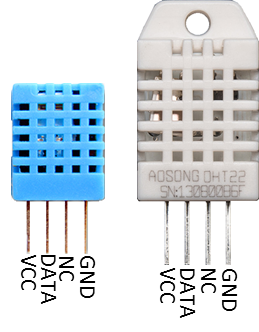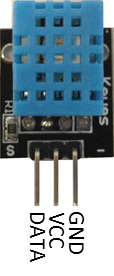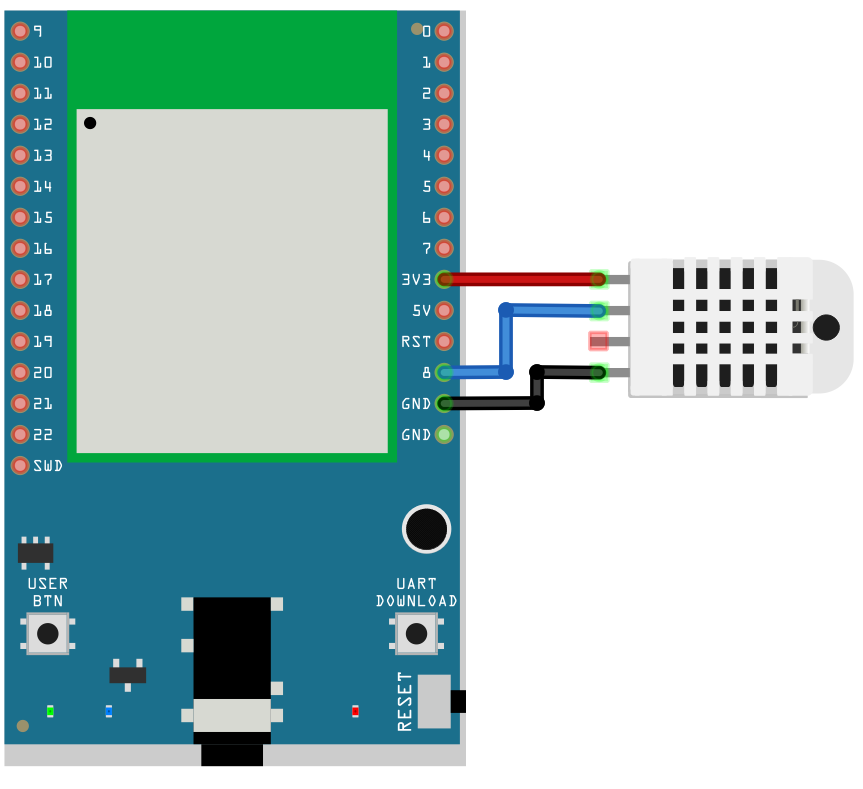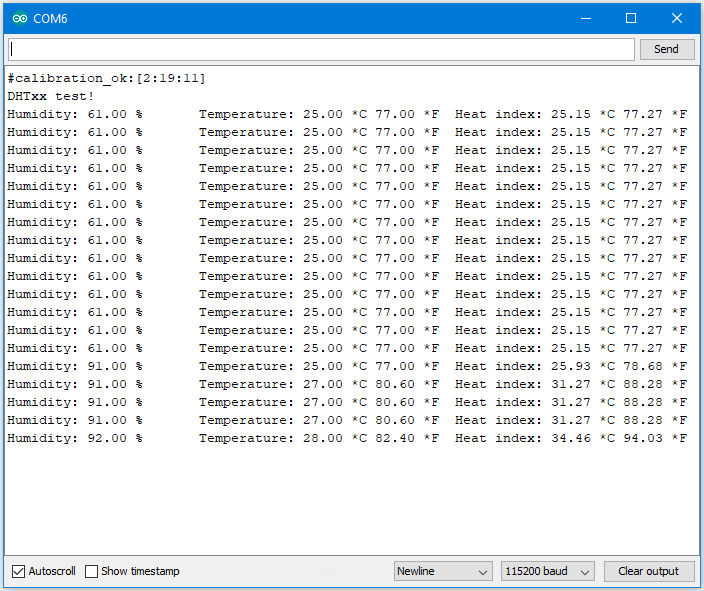DHT11 is a temperature and humidity sensor which operates at voltage 3.3V~5V. At room temperature, the measurable range.
DHT11/ DHT22 / DHT21 is a temperature and humidity sensor which operates at voltage 3.3V ~ 5V.
Ameba RTL8722DM is a low-power dual-band WLAN and Bluetooth Low Energy SoC by Realtek. The RTL8722DM also include memory for Wi-Fi protocol functions and application making it simple for anyone to develop various kind of IoT applications. At the same time it has a wide range of peripheral interfaces. With all these interfaces, it can connect to most of the electronics components like LEDs, temperature and humidity sensors, and so on.
More Resources:
If you need additional technical documents or the source code for this project. Please visit the official websites and join the Facebook group and forum.
Ameba Official Website: https://www.amebaiot.com/en/
Ameba Facebook Group: https://www.facebook.com/groups/amebaioten
Ameba Forum: https://forum.amebaiot.com/
Setup
The temperature and humidity sensor which operates at a voltage of 3.3V ~ 5V. At room temperature, the measurable range of the humidity is 20% ~ 90%RH with ±5%RH precision, the measurable range of the temperature is 0~ 50℃ with ±2℃ precision. Another choice of temperature and humidity sensor is DHT22 sensor, which has better precision. Its measurable range of the humidity is 0% ~ 100% RH with ±5%RH precision , the measurable range of the temperature is 40~125℃ with ±0.2℃ precision. There are 4 pins on the sensor:
Since one of the 4 pins has no function, there are temperature/humidity sensors with only 3 pins on the market:
DHT is normally in the sleeping mode. To get the temperature / humidity data, please follow the steps:
- Awake DHT: Ameba toggles its DATA pin of GPIO. Now the DATA pin of GPIO serves as digital out to Ameba.
- DHT response: DHT also toggles low its DATA pin of GPIO. Now the DATA pin of GPIO serves as digital in for Ameba.
- DHT sends data: DHT sends out the temperature/humidity data (which has size 5 bytes) in a bit by bit manner. To represent each bit, DHT first pull low the DATA GPIO pin for a while and then pull high. If the duration of high is smaller than low, it stands for bit 0. Otherwise it stands for bit 1.
Wiring Diagram
Connect up the temperature and humidity sensor with the RTL8722DM_MINI board.
Final Result
Open the sample code in "Files"→ "Examples" → "AmebaGPIO" → "DHT_Tester". Compile and upload to Ameba, then press the reset button. The result would be shown on the Serial Monitor.








